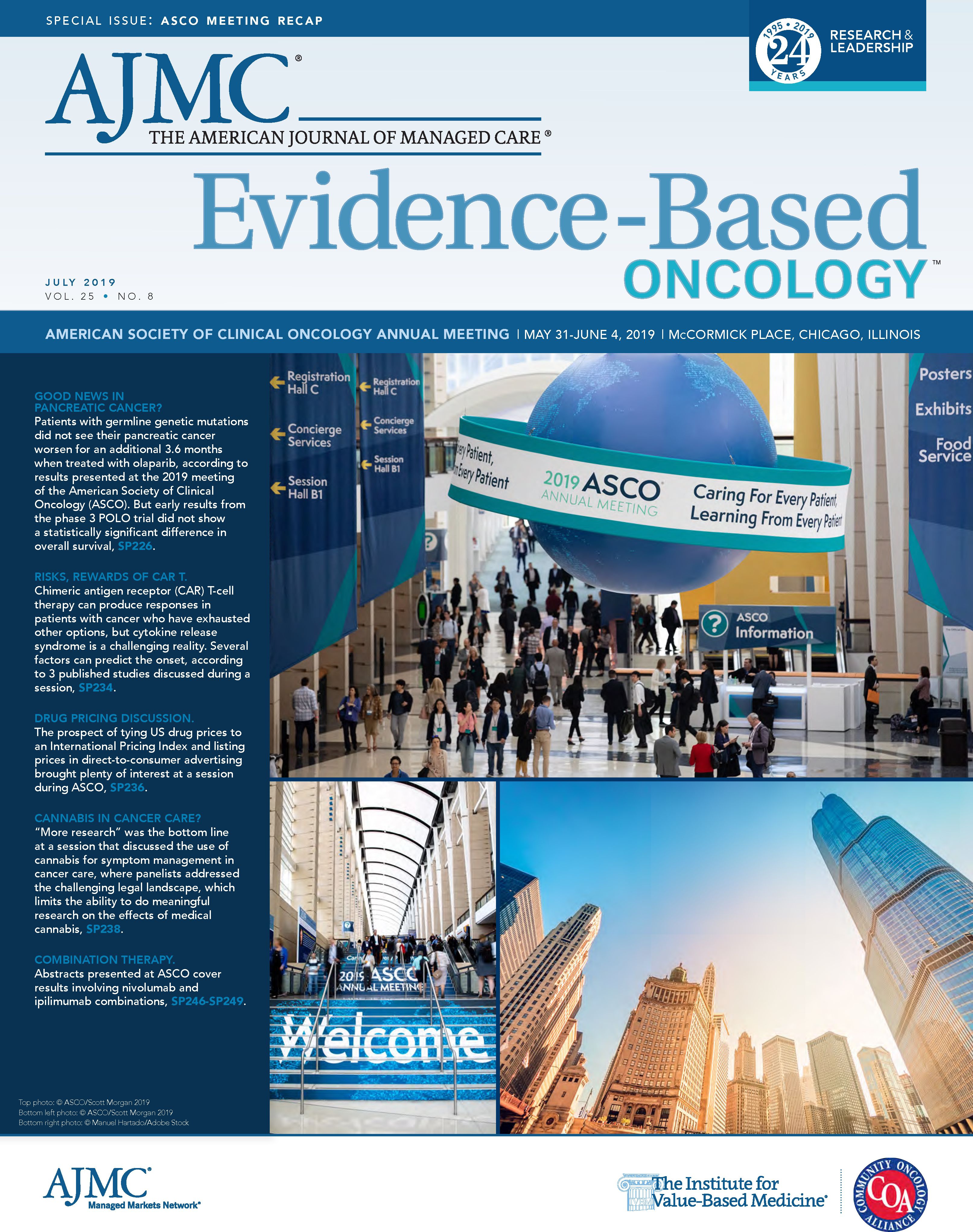- Center on Health Equity & Access
- Clinical
- Health Care Cost
- Health Care Delivery
- Insurance
- Policy
- Technology
- Value-Based Care
How Real-World Data Can Affect NSCLC Treatment
Real-world evidence is being embraced by FDA as a way to expand the review of data beyond the trial population, which may not be representative of the patients seen in clinics on a daily basis.
A number of abstracts at the 2019 Annual Meeting of the American Society of Clinical Oncology (ASCO) featured studies that focused on using real-world data to advance research and cancer care in non—small cell lung cancer (NSCLC).
“Now, what do we mean by real-world data? We mean data relating to patient health status or the delivery of healthcare routinely collected from a variety of
sources including electronic health records, claims data, and more,” explained Sumithra J. Mandrekar, PhD, of Mayo Clinic, during an oral presentation of the abstracts. “But that’s different from real-world evidence, which is the clinical evidence regarding the usage and potential benefits, or risks of a medical
product derived from the analysis of real-world data.”
The first presenter, R. Donald Harvey, PharmD, BCOP, FCCP, FHOPA, of the Winship Cancer Institute, discussed the results of a real-world study that
surveyed the impact of broadening clinical trial criteria for patients with advanced NSCLC (aNSCLC).
He explained that the study utilized the guidelines put out by groups like the American Society of Clinical Oncology and Friends of Cancer Research for
broadening eligibility criteria. The goal was to make the trial population more representative of what is seen in the real world and make the results more generalizable, as well as accelerate trial accrual.
The study found that using expanded criteria would enable nearly twice as many patients with aNSCLC to qualify and consider trial participation, and it
would also likely result in trial participants who are more reflective of a broader patient population.
However, Mandrekar offered a note of hesitation when expanding trial criteria: “Sometimes expanding trial criteria actually leaves you with a lack of
randomization. Randomization is critical for the success of a trial.”
Interestingly, another study looked at a predictive model for determining 1-year survival in NSCLC based on electronic health records (EHRs) and tumor
sequencing data available at the Department of Veterans Affairs (VA).
The cohort characteristics identified 365 patients who were older, predominantly male, and had a high rate of prior or current smokers. The study also
found that a large number of patients in the cohort were classified as having stage IV NSCLC.
The genomic features of the predictive model defined binary features that reflected the presence or absence of variation in 96 genes that were included in
both the EHR and tumor sequencing data, as well as the number of these genes that were present without variation.
“We were able to build an accurate predictive model of 1-year survival in patients with NSCLC at the VA, which integrates real-world clinical and genomic
data,” said Nathanael Fillmore, PhD, of the VA Boston Healthcare System. “This provides a good foundation to move forward in being able to offer support for clinical decision making for VA clinicians. However, the model does not yet include certain features, including weight loss and treatment details.”
Another study was presented on utilizing big data to advance personalized therapies. Robert Doebele, MD, PhD, of the University of Colorado, began his
presentation by first asking the question, “Is big data always best?” He offered an answer to his own question, explaining that sometimes using big data or big clinical trials can allow researchers to miss smaller, yet significant, findings.
He presented data from a study that enrolled 1692 patients and then broke that study out to just 9 patients with NSCLC. In a graph of all patients, all
responses to the drug seemed to fall along the same curve. However, in the smaller cohort of patients, the data showed that this group actually had a
“phenomenal response to the EGFR mutation,” he said.
In keeping with the theme of ASCO’s meeting this year, “Caring for every patient, learning from every patient,” Doebele closed by saying that,
“Models derived from large cohorts need robust data and, ultimately, need to be independently validated. Small data [have] ongoing merit and value
for new discoveries, and with NSCLC especially, it can’t be thought of as a single disease.”
Trends in Hospital Pricing for Vulnerable Emergency Department Users, 2021-2023
December 4th 2025Self-pay emergency department prices rose significantly from 2021 to 2023, especially at for-profit and system-affiliated hospitals, highlighting growing affordability challenges for uninsured and underinsured patients.
Read More
Exploring Racial, Ethnic Disparities in Cancer Care Prior Authorization Decisions
October 24th 2024On this episode of Managed Care Cast, we're talking with the author of a study published in the October 2024 issue of The American Journal of Managed Care® that explored prior authorization decisions in cancer care by race and ethnicity for commercially insured patients.
Listen
Integrated Care for Chronic Conditions: A Randomized Care Management Trial
December 3rd 2025The authors sought to understand the differential impact of payer-led community-based care management approaches on stakeholder-oriented outcomes for publicly insured adults with multiple chronic conditions.
Read More


